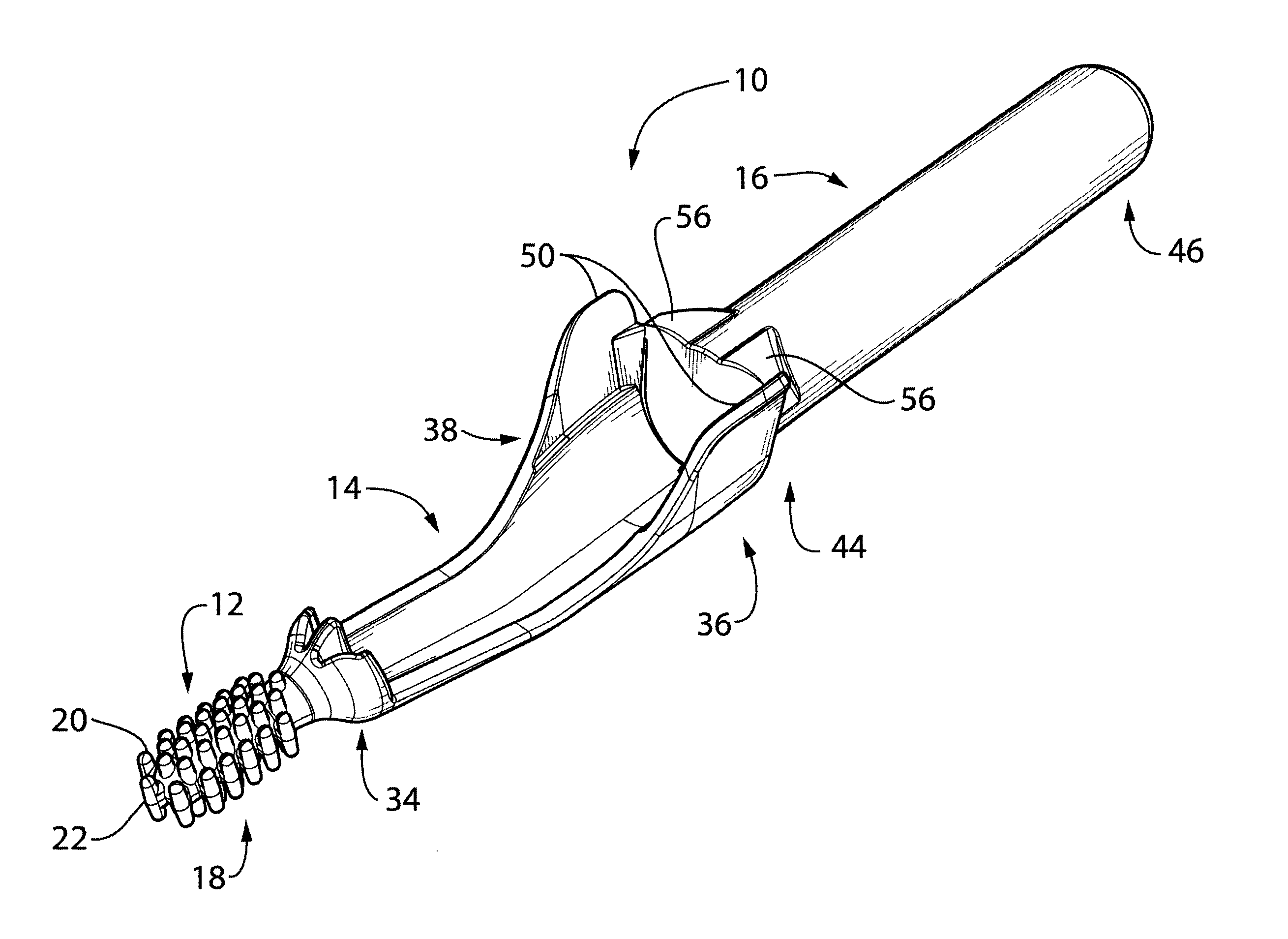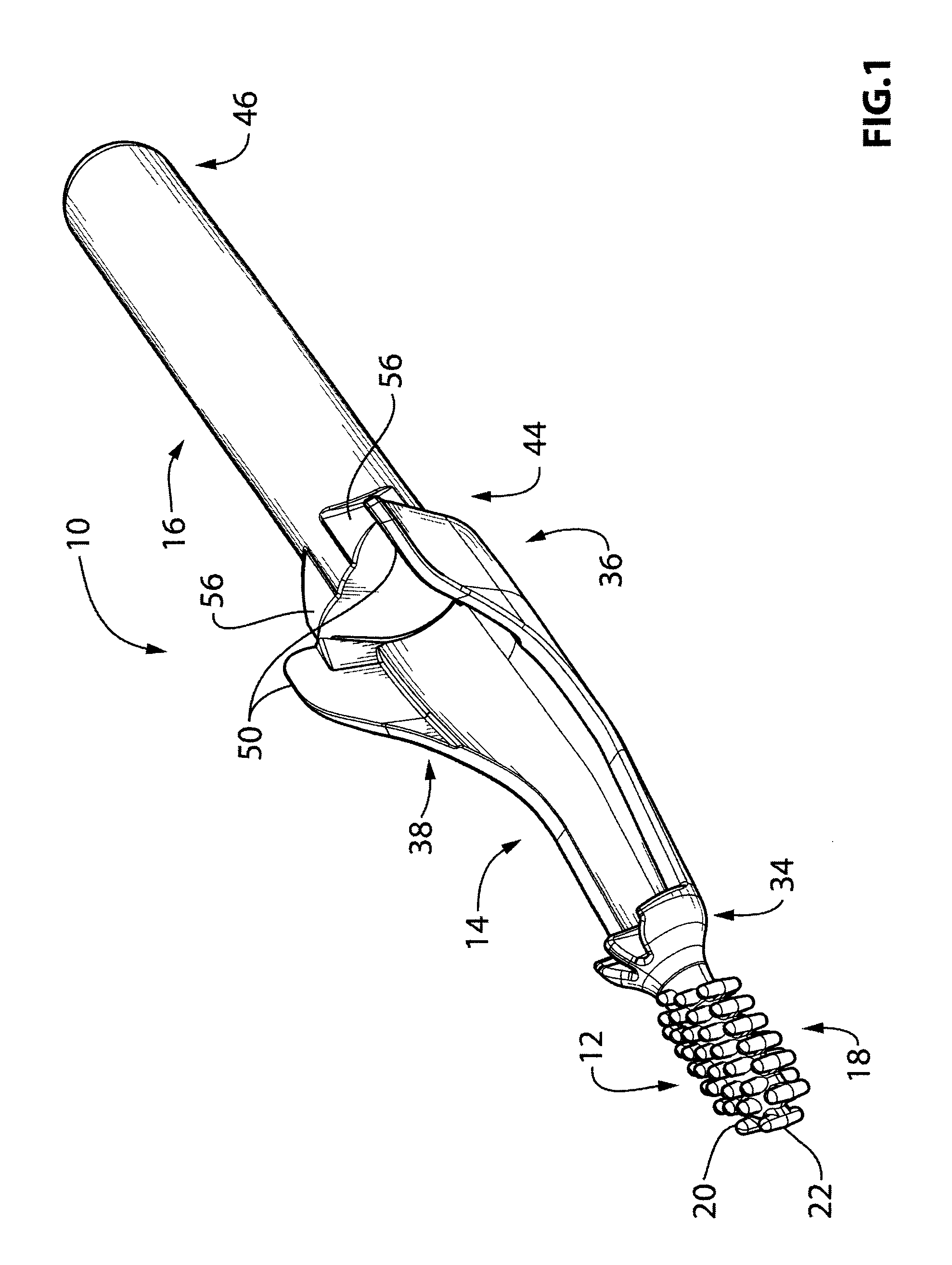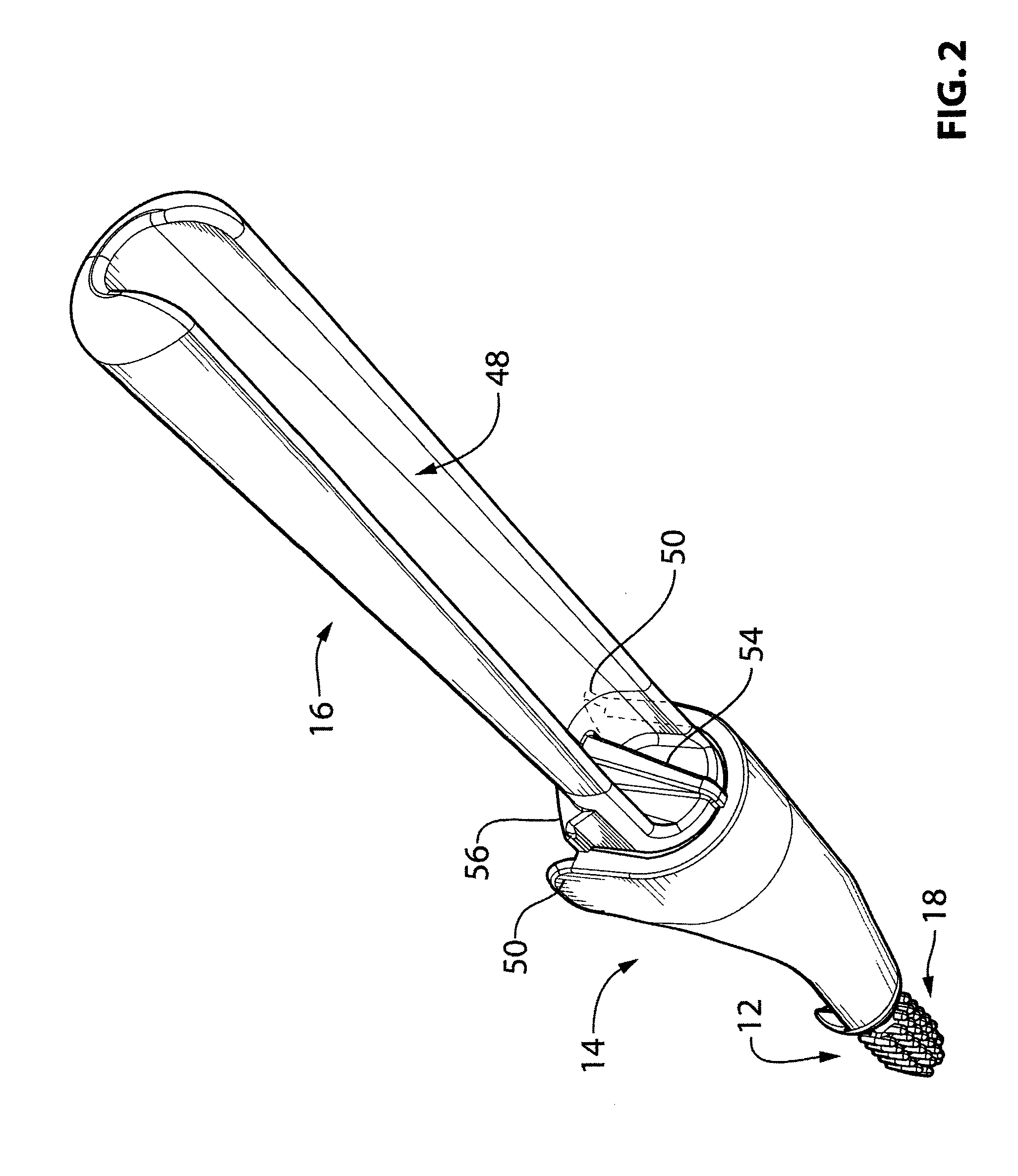Sample collection tool
a collection tool and sample technology, applied in the field of sample collection devices, can solve the problems of significant pain, invasive and mutilating practices, and the collection devices currently in use are not typically adaptable to the use of samples, so as to facilitate access and removal, facilitate collection separation
- Summary
- Abstract
- Description
- Claims
- Application Information
AI Technical Summary
Benefits of technology
Problems solved by technology
Method used
Image
Examples
example 1
[0125]Total DNA yield was determined from the use of a collection tool that does not include raised sampling elements and compared to the total DNA yield obtained using a collection tool according to the present invention that does include raised sampling elements. In this case, both collection tools include a collection tip that is approximately ovoid and has a concave face so as to form a scoop-like collector. The collection tool of the present invention additionally included raised sampling elements on the convex face of the scoop-like collector.
[0126]In the first study, oral DNA collection was performed on p6-7 CD-1 mouse pups using the collection tool having a scoop-shaped collection end (“U1”, see Zhang et al., supra), without any raised sampling elements. Each device was gently scraped ten times on the inside of one cheek (10×) or on the inside of two cheeks, consecutively (20×). The device was then left in the stabilizing solution for processing (leave in), rinsed several ti...
example 2
[0129]Oral DNA collection was performed on p8-9 CD-1 mouse pups using a collection tool of the present invention that includes a moulded, scoop-shaped collection end having a plurality of raised ridges on the convex surface of the scoop (“UR”; FIG. 20).
[0130]Each collection tool was gently scraped ten times on the inside of one cheek (10×), on the inside of two cheeks, consecutively (20×), or two collection tools (A+B) per mouse were used such that one collection tool (A) was gently scraped ten times on the inside of one cheek and a second collection tool (B) was gently scraped ten times on the inside of the second cheek (10+10×). In addition, either the features (the raised ridges on the convex side) or the scoop (the edge of the spoon) were used for collecting. The collection tool was then left in the stabilizing solution for processing. Each collection tool was placed in a single microcentrifuge tube containing 200 μL stabilizing solution. Total DNA was isolated from each tube, r...
example 3
[0132]A comparison of total DNA yield from mouse oral collections using the sample collection tool (PA) of the present invention and a scoop-shaped collection device (U1) was performed. As in Example 2, each device was gently scraped ten times on the inside of two cheeks, consecutively (i.e., 20×). The device was then left in the stabilizing solution. As illustrated in FIG. 33, an overall higher total DNA yield was demonstrated with the sample collection tool of the present invention. This may be attributed to an increased surface area of the collection end of the sample collection tool as compared with the scoop-shaped collection device.
PUM
| Property | Measurement | Unit |
|---|---|---|
| diameter | aaaaa | aaaaa |
| length | aaaaa | aaaaa |
| diameter | aaaaa | aaaaa |
Abstract
Description
Claims
Application Information
 Login to View More
Login to View More - R&D
- Intellectual Property
- Life Sciences
- Materials
- Tech Scout
- Unparalleled Data Quality
- Higher Quality Content
- 60% Fewer Hallucinations
Browse by: Latest US Patents, China's latest patents, Technical Efficacy Thesaurus, Application Domain, Technology Topic, Popular Technical Reports.
© 2025 PatSnap. All rights reserved.Legal|Privacy policy|Modern Slavery Act Transparency Statement|Sitemap|About US| Contact US: help@patsnap.com



